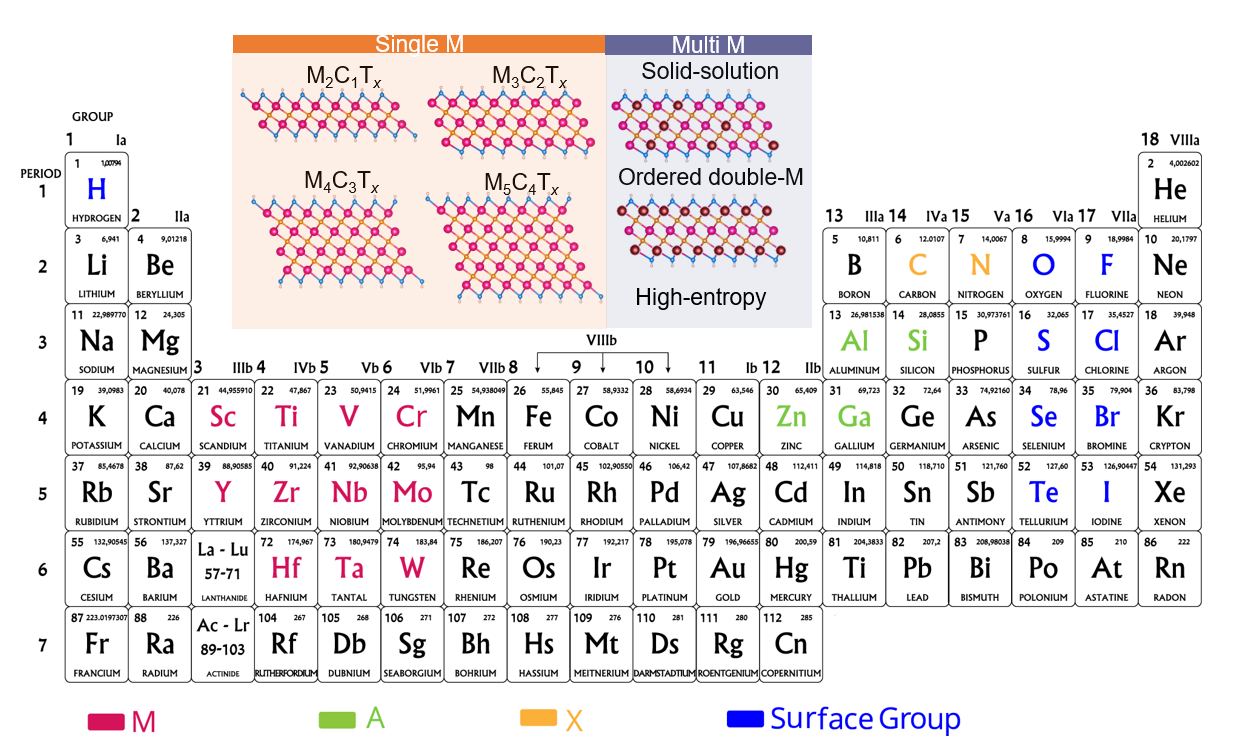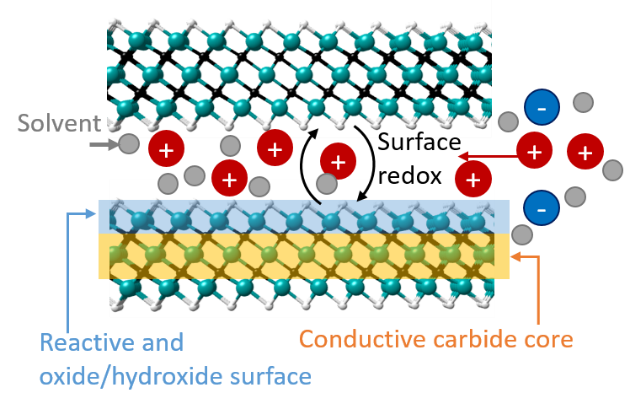MXenes
2D transition metal carbide/nitride MXenes for high-rate electrochemical energy storage application
Two-dimensional (2D) materials are versatile choices for electrochemical energy storage applications. A wide variety of ions can be reversibly intercalated and de-intercalated in 2D layers, realizing charge storage and release. Due to their open layered structure and weak Van der Waals interaction between subsequent layers, 2D materials, allow high-rate energy storage with low-ion intercalation resistance. Among 2D materials, transition metal carbide/nitride MXenes are particularly promising electrode materials offering a high charge storage capacity with an ultrahigh rate capability due to their redox-active surface and metallic high electrical conductivity (Figure 1&2). Since the first discovery of MXene in 2011, there has been ever-growing interest in MXene-related research, such as novel 2D materials synthesis with new stoichiometry, structural and surface characterization, and functionalization, and the development of energy storage electrodes.
Here is a list of research activities we are doing/planning in the SEE group. If you are interested in any of the below topics and would like to join the group as a thesis/project student, please contact Dr. Xuehang Wang (x.wang-22@tudelft.nl) and Prof. Marnix Wagemaker (m.wagemaker@tudelft.nl).
- The synthesis of novel 2D MXenes using both the molten salt and solution-based methods
- Solid-state NMR study on the electrochemical charging processes of MXenes during cycling
- In-situ X-ray diffraction and neutron diffraction study on the interfacial properties of MXenes
- Neutron reflectometry study on the surface chemistry of MXenes
- Mechanistic study of MXene-based high-rate electrochemical energy storage processes
- Interfacial engineering at the electrode-electrolyte interfaces
Selected Publications: ACS Energy Letter, 2022, 7, 30-35.; ACS Nano, 2021, 15, 9, 15274–15284.; Nature Reviews Materials, 2020, 5, 787–808.; Nature Energy, 2019, 4, 241–248.
If you are interested in learning more about Dr. X Wang’s research, please visit her website www.xwang.nl. If you would like to learn more about MXenes and electrochemical methods, you can also pay a visit to our YouTube Channel (EChem Channel).

